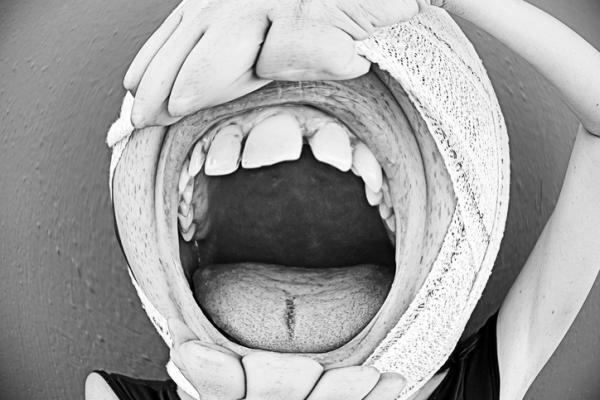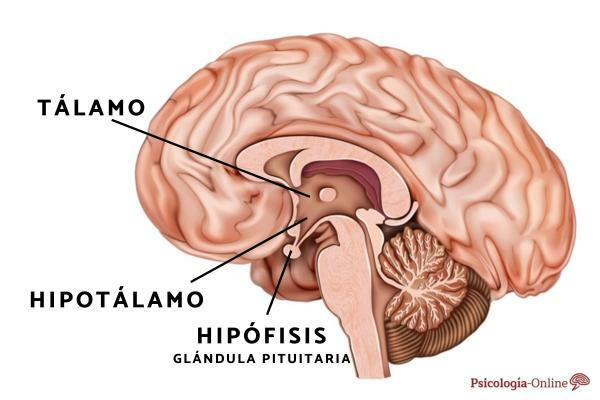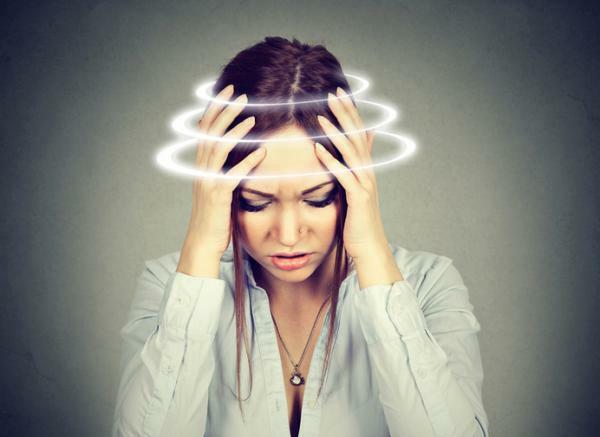
Moods and emotions are constantly evolving and changing. For most people, these emotional swings and changes are within limits. predictable situations and more or less known situations, which allows them to exercise a certain degree of control over the themselves.
Yet other people are apparently 'incapable' of exercising some control and governance over their own emotions.
Either because of their duration, their intensity, their frequency or their apparent ‘autonomy’, these feelings ‘escape’ their control, interfering with significantly in all areas of his life, reaching the category of pathological, with potentially lethal consequences for the subject. We invite you to continue reading this PsicologíaOnline article, if you are interested in knowing more about Manic-Depressive Disorder (Bipolar).
Index
- Diagnosis of the disorder
- How do you live with this disorder?
- The romanticization of the disorder and its symptoms
- Manic episodes
- Hypomania
- Depressive episodes
- Mixed episodes
- The importance of an early diagnosis
- Comorbidity and other characteristics
Diagnosis of the disorder.
The International Classification of Diseases (ICD-10), in its tenth revision and in the section dedicated to mental and behavioral disorders defines the Bipolar disorder (manic-depressive disorder) in the following terms: Bipolar disorder (manic-depressive disorder)
“It is a disorder characterized by the presence of repeated episodes (that is, at least two) in which the mood and levels of activity of the patient are profoundly altered, so that sometimes the alteration consists of an exalted state of mind and an increase in vitality and activity level (mania or hypomania) and in others, in a decrease in mood and a decrease in vitality and activity (depression)...
Characteristically, complete recovery occurs between isolated episodes. Unlike other mood disorders - affective - the incidence in both sexes is approximately the same...
... Episodes of mania usually start abruptly and last for a period time ranging from two weeks to a quarter to five months (median duration is four months). Depressions tend to last longer (their duration is longer (their average duration is 6 months), although they rarely last more than a year, except in elderly people ...
... Both types of episodes often result from stressful events or other psychological trauma, although their presence or absence is not essential for diagnosis ...
... The first episode can occur at any age, from infancy to old age. The frequency of episodes and the form of relapses and remissions can be highly variable, although remissions tend to be shorter and depressions more frequent and prolonged as the mean age of life."
The description offered in the International Classification of Diseases (ICD-10) or in the Diagnostic and Statistical Manual of Mental Disorders (DSM-IV) It is still, in most cases, in most cases, a kind of description / list of type-symptoms, insufficient by itself if the aim is to capture the complexity of these types of disorders and that the scientific literature is unable to fully reflect.
Each individual presents their particular manifestation of the disease. Some people are characterized by periods of low intensity mania, known as hypomanias, while others suffer them with extreme violence. Others may experience depressed moods for short periods of time, while others plunge into long periods of depression. Even on some occasions, certain people may experience experiences of a psychotic nature, such as delusions or hallucinations.
How do you live with this disorder?
One of the best descriptions of what it must be like to live with manic-depressive disorder, or bipolar disorder in today's psychiatric terminology, is the one offered by Dr. Kay Redfield Jamison (1993) in her work 'Touched With Fire: Manic-Depressive Illness and the Artistic Temperament. '' Dr. Redfnt 'himself; Dr. Redfield Jamison himself suffers from this disorder, as far as he knows firsthand is talking:
“The clinical reality of manic-depressive illness is far more lethal and infinitely more complex than the psychiatric nomenclature - bipolar disorder - is capable of suggesting.Fluctuating energy and mood cycles serve as a backdrop to constantly shifting thoughts, behaviors, and feelings. Illness exemplifies the extremes of human experience.Thought seems to range from psychosis or insanity to unusually clear and rapid thought patterns, with associations; I ask, with associations of creative ideas, until ending in a dullness so deep that no type of mental activity with meaning is able to occur.Behavior can range from frantic, expansive, bizarre or seductive to the point of isolation, inactivity and dangerously suicidal impulses.Moods oscillate erratically between euphoria, irritability, and utter despair.The rapid oscillations and combinations of the aforementioned extremes lead to a clinical image of intricate and complex texture.. " -Redfield Jamison, Touched With Fire, pages 47-48-

The romanticization of the disorder and its symptoms.
There is a dangerous tendency to associate a ‘romantic’ character with this type of illness. It is known that many artists, musicians and writers have experienced these extreme changes in their moods. However, the reality of this disorder is very different. Many lives are ruined and in fact, if the manic-depressive patient does not receive adequate care, the disease leads the individual to end his own life in almost 20% of the cases.
There is much less research on manic-depressive disorders than on depressive disorders.In addition, as it is a relatively infrequent condition, the studies carried out in the population generally offer statistically less reliable and significant data than those performed on other disorders. However, it is possible to offer some data that allow a first approach to this disease.
Men and women –unlike other affective disorders- have approximately the same risk of suffering from the disease, which typically tends to emerge in adolescence or early adulthood and continues its progression throughout the life of the subject destroying - in the best of cases - if not the subject's school, work, family and social life receives adequate treatment and leading - in the worst case - the person to put an end to their own existence.
As for his form of appearance, the episode usually appears acutely: symptoms can manifest in a matter of days or weeks. The duration of the episodes is highly variable: from a few days to several months, even in the same patient. Before the appearance of effective drugs, the average duration ranged from six months to a year, but today they tend to be significantly longer. short -weeks or a few months- .Even with medication, depressive episodes usually last longer than episodes. maniacs.
Despite what we eat & what is commonly believed, both kids Like the teenagers are susceptible to developing this disorder, having a significantly higher probability those whose parents already have this disease. Unlike what happens in the case of adults, where the distinction between episodes is better defined, children and adolescents tend to present oscillations, especially rapid and intense, between manic and depressive moods within the same day more frequently than in the case of patients with Older. Bipolar children have a greater tendency to show aggressive and / or destructive behaviors. Mixed episodes are especially common among adolescents with manic-depressive disorder (Geller & Luby, 1997).
Episodes of mania and depression are markedly recurrent throughout the life of the subject. Between episodes, most people with bipolar disorder are symptom-free, but at least a third of them have some residual symptoms. A small percentage of patients experience chronic symptoms, regardless of the degree of treatment received (Hyman & Rudorfer, 2000).
The rate of hospitalizations characteristic of this type of disorder is remarkable. Recent research conducted in the United States by the National Depressive and Manic Depressive Association (NDMDA) found that 88% of patients diagnosed with ‘bipolar disorder’ had been psychiatrically hospitalized at least once, and 66% had been admitted two or more times (Lish et al., 1994). Symptoms can remit significantly when receiving appropriate treatment, functional disorders in the life of the subject are especially persistent and recurrent (Coryell and cols., 1993).
The characteristic psychiatric symptoms of bipolar disorder are usually classified into a series of basic categories that are listed below.
Manic episodes.
The manic episode refers to an abnormally high, excited or irritable mood, not related to the abuse of substances or attributable to a disorder uiable to a medical disorder, the minimum duration of which is one week, and which includes a variety of maladjustments in behavior and thought patterns that cause a significant mismatch in the various areas of the subject's life.
The very description, far from any type of technical jargon, of a patient suffering from this disorder allows us to obtain an approximate idea of what happens during this phase: “Quick ideas become too fast and there are too many ......confusion quickly replaces clarity... thought freezes ...memory fades... overflowing humor stops being fun... Your friends start to get scared... everything turns against you... you feel irritable, angry, scared, uncontrollable and trapped. "
In a typical manic episode, some of the following symptom they are usually present, to the point of significantly affecting the normal functioning of the subject.
- Disproportionate and unjustified feelings of well-being and euphoria.
- Delusions of grandeur.
- Concentration difficulties.
- Feeling of invincibility.
- Unrealistic beliefs about one's abilities and possibilities.
- Hyperactivity
- Inability to relax or remain inactive
- Extreme irritability
- Less need for rest at night.
- Patterns especially fast and accelerated thinking.
- Lack of good judgment.
- Drug abuse, particularly cocaine, alcohol, and barbiturates.
- Disproportionate feelings and excessive euphoria and well-being.
- Behavior patterns significantly different from usual.
- Speak quickly and sometimes difficult to understand.
- Significant increase in energy and activity levels.
- Increased sexual desire.
- Exaggerated self-esteem and grandiosity.
- Verborrheic or more talkative than usual.
- Flight of ideas or subjective experience of acceleration of thought.
- Extreme distraction.
- Manifest psychomotor agitation.
- Excessive involvement in risky leisure activities.
- Recurring thoughts about death and / or suicide attempts

Hypomania.
In so-called hypomanic episodes, symptoms are similar to those during the manic phase, although they present the following differences key code:
- The hypomanic episode does not cause significant deterioration in the normal functioning of the subject in his daily life.
- The hypomanic episode does not require hospitalization.
- The hypomanic episode does not include the possibility of psychotic episodes such as hallucinations or delusions.
The International Classification of Diseases (ICD-10) defines hypomania in the following terms:
"Hypomania is a minor degree of mania in which mood and behavioral disturbances are too persistent and marked to be included in the cyclothymia section but at the same time are not accompanied by hallucinations or ideas delusional. There is a mild and persistent exaltation of mood (for at least vaute; mood (for at least several days in a row), increased vitality and activity, and generally marked feelings of well-being and high physical and mental performance.
It is also common for the individual to become more sociable, talkative, behaves with excessive familiarity, shows excessive sexual vigor and a decreased need for sleepBut none of this is intense enough to interfere with work activity or cause social rejection.
In some cases irritability, conceit, and rudeness can substitute for exaggerated euphoric sociability. The capacity for attention and concentration may be altered, resulting in an inability to calmly carry out work activities, entertainment or rest quietly. However, this does not usually prevent interest in completely new businesses and activities or slightly excessive expenses. "
The following personal testimony illustrates the differences in the reality perceived by the subject himself with respect to the typical manic episode previously exposed: “At first, when I feel good, it is tremendous... the ideas follow one another with speed... all the shyness disappears, the The right words and gestures suddenly appear... uninteresting people and things become fascinating... Sensuality is uncontrollable, the desire to seduce and be seduced is irresistible... Your mind is flooded with incredible feelings of confidence, power, well-being, omnipotence, euphoria... you feel empowered to do anything... but... somehow... this all begins to change."
Depressive episodes.
In depressive episodes typical, in general, the sufferer suffers from a sad and hopeless mood, a feeling of inadequacy and deep isolation together with a loss of the ability to care and enjoy things, a decrease in vitality and energy that causes a reduction in your activity level and exaggerated fatigue, which appears even after a minimal effort.
A first-person testimony about the mood characteristic of this phase helps to have a more accurate picture of the process the patient is going through: “I feel completely incapable of doing anything right... it seems as if my mind has slowed down and overloaded to such an extent that it make me practically useless... I feel useless... I feel trapped by despair and pessimism... others tell me 'It's just something temporary, it will pass and you'll be fine! ”... but of course he has no idea how I really feel... I can't even move, feel or think and there is nothing to amount."
Below are some of the most characteristic symptoms of this depressive phase:
- Intense feelings of sadness and dejection.
- Self-perception of uselessness and little worth.
- Loss of interest in the person's preferred activities.
- Inability to experience positive feelings / emotions.
- Decreased libido / sexual desire.
- Feelings of pessimism and hopelessness.
- Loss of emotional reactivity to pleasant environmental events and circumstances.
- Significant changes in sleep patterns, either due to a significant decrease or increase, without apparent justification
- Irritability greater than usual.
- Pain or other negative bodily sensations not attributable to a physical disorder.
- Morning worsening of depressed mood.
- Changes in eating habits, either due to a significant increase or decrease.
- Manifest difficulties in concentration, memory and in decision-making processes.
- Unjustified resentment and frustration.
- Feelings of tiredness and physical exhaustion.
- Grim outlook for the future.
- Feelings of inferiority and inadequacy.
- Significant decrease in the dicative levels of energy and vitality levels.
- Loss of self-confidence and self-esteem.
- Feeling of inner emptiness and guilt.
- Recurrent suicidal ideation and / or suicide attempts.
- It is important to note that on some occasions depressive or manic episodes can be accompanied by psychotic symptoms such as:
- Hallucinations Listen, see or in some way 'perceive' the presence of certain stimuli that are not present.
- Delusional ideas. False personal beliefs not susceptible to reason or contradictory evidence and not derived from cultural conditioning factors.
The International Classification of Diseases (ICD-10), in this regard states the following: “The degree of increased self-esteem and ideas of greatness can lead to ideas delusions as well as irritability and suspicion can give way to delusions of persecution. In severe cases, marked delusions of grandeur or religion may appear regarding one's own identity or a special mission.The flight of ideas and the logorrhea can lead to a lack of comprehensibility of the language.
Intense and sustained arousal and physical activity can lead to assault or violence.
Neglecting food, fluid intake and personal hygiene can lead to dangerous situations of dehydration and abandonment. "

Mixed episodes.
Maybe the most disabling, disconcerting, and uncomfortable episodes for the individual they are those that involve symptoms characteristic of depression and the manic episode and that can occur during the same day. These are the so-called mixed episodes. The patient is excited and anxious but at the same time also feeling irritable and depressed Instead of feeling 'on top of the world'. Mania and depression symptoms are present simultaneously.
Facing the diagnosis of a mixed episode, the Diagnostic and Statistical Manual of Mental Disorders (DSM-IV) offers the following basic criteria:
- "TO. The criteria are met for both a manic episode and a major depressive episode - except for the duration - almost every day for at least a one-week period.
- B. The mood disturbance is severe enough to cause significant job, social, or relationship impairment with others, or to need hospitalization in order to prevent harm to self or others, or there are symptoms psychotic.
- C. The symptoms are not due to the direct physiological effects of a -p substance. eg, a drug, medication or other treatment- or a medical illness -p. eg, hyperthyroidism-. "
Mixed episodes are actually more common than initially believed, particularly among younger people, being observed occurrence rates ranging from 5-70% according to various studies (McElroy et al., 1992) Mixed episodes, where depression is dominant on mania and hypomania is being especially recognized and investigated today, unlike what happened in the past (Akiskal, 1996).
The importance of an early diagnosis.
It will never be stressed enough the urgent need for a diagnosis early and effective treatment of a disease, by definition complex and difficult to treat, and with potentially lethal consequences for the individual.
According to a recent study, bipolar disorder is, in most cases, undiagnosed or misdiagnosed for a period of time that, on average, reaches 8 years. Patients usually do not seek professional help for an average of more than 10 years from the onset of the first symptoms and about 60% of patients are not treated correctly or treated for ailments other than those causing their problems. The vast majority of patients with bipolar disorder experience multiple periods of relapse (Keller et al., 1993).
Early and accurate diagnosis, together with the choice and application of psychotherapeutic treatment and most appropriate pharmacological measure, are the only viable measure and with certain guarantees of success, to avoid some of the possible aftermath that drags this disease.
The following quote, taken from Goodwin and Jamison's work entitled ‘Manic Depressive illness’, offers a vision quite adjusted to the reality of the lethal potential characteristic of this type of junk these types of disorders:
“Patients with a manic-depressive illness are more likely to commit suicide than individuals affected by any other psychiatric or medical illness.
The mortality rate is higher than that caused by most cardiovascular diseases and by various types of cancer.
However, this mortality rate is often underestimated and ignored, a trend that may be partially attributable to the widely held belief that suicide is an act entirely dependent on one's own Will."
-Goodwin and Jamison, Manic Depressive Illness, p. 227-
The following figures, taken from recent studies in this regard, seem to corroborate the idea expressed above:
- On 1% of the world's population is estimated to suffer from this type of disorder, ranging from its mildest to extreme forms. Statistically men and women are equally represented.
- Approximately 1 in 5 bipolar disorder patients try to kill themselves. This percentage of suicide attempts is 30 times higher than that registered in the general population.
- The risk of suicide is significantly higher in the early stages of the disorder, compared to later development in later development of the disease.
- The mortality rate among untreated manic-depressive patients is higher than that of most cardiovascular diseases and many types of cancer.
- Recent studies carried out among those affected by bipolar disorders indicate the occurrence of, at least one episode of suicide attempt in a percentage that ranges between 25 and 50% of the cases.
- 1 in 5 people affected by manic-depressive disorder will die from suicide.
- The percentage of success achieved in the treatment of manic-depressive disorder, in alleviating the basic symptoms, reaches the figure of 80%.
- It is estimated that among all the people who attempt suicide, 2/3 of them have experienced as they have experienced some type of depressive or manic-depressive episode.
Comorbidity and other characteristics.
It is important to note that more than 50% of patients with bipolar disorder they abuse alcohol or other types of substances during their illness. There is well-known evidence of the relationship between the use of, for example, cocaine and the presence of an underlying bipolar disorder. Alcohol and substance abuse are often circumstances that mask this reality and that add, if possible, more complexity to the problem (Akiskal, 1996).
On the other hand, among the negative consequences derived from the disease are those more directly related to the family and social life of the individual. Bipolar disorder adds an impressive, often excruciating amount of stress and strain on the relationshipsAccording to the recent NDMDA study, it is estimated that between 57% and 73% of patients diagnosed with bipolar disorder are divorced or have experienced significant relationship crises (Lish and cols., 1994).
To highlight one last aspect regarding the consequences that derive from a manic depressive disorder when it is not properly diagnosed and treated. Bipolar disorder can often be masked by others disorderspsychiatric Like the conduct disorders, hyperactivity, alcohol, drug and other substance abuse, psychotic symptoms, obsessive traits, panic attacks, borderline personality or post-traumatic stress disorder. Conditions that add difficulty in its differential diagnosis and in the subsequent design of the most appropriate intervention strategies in each case (Regier et al., 1990).
Without denying the obvious complexity in the treatment of these types of disorders, I would not like to end this article without at least offering a message of hope for this type of patient. Most people with bipolar disorder, even in its most extreme manifestations, are likely to achieve substantial and significant improvements in the stabilization of their moods and in the derived symptoms, as long as they are properly diagnosed and receive specialized professional treatment.
The most recent research suggests the combination of psychopharmacological strategies (administration of lithium together with some antipsychotic, anticonvulsant and anxiolytic drugs) and psychosocial (cognitive-behavioral psychotherapy, psychoeducation and therapy family / complementary partner), maintained for long periods of time due to the special recurrent nature of the disease, as the therapeutic strategy more effective and more likely to be successful in achieving recovery for the patient suffering from manic-depressive disorder or bipolar disorder (Huxley et al., 2000; Sachs et al., 2000; Sachs and Thase, 2000).
This article is merely informative, in Psychology-Online we do not have the power to make a diagnosis or recommend a treatment. We invite you to go to a psychologist to treat your particular case.
If you want to read more articles similar to Manic-Depressive Disorder (Bipolar), we recommend that you enter our category of Clinical psychology.
Bibliography
- Akiskal, H. (1996). The Prevalent Clinical Spectrum of Bipolar Disorders: Beyond DSM-IV. JClinPsychopharm.16: 2Suppl1.4S-14S
- American Psychiatric Association (1995). Diagnostic and Statistical Manual; Statistical and Statistical of Mental Disorders. Barcelona. Masson
- Belloch, A. and Sandín, B. (1996). Manual of psychopathology. McGraw-Hill. Interamerican.
- Colom, F., Vieta, E., Martínez, A., Jorquera, A. and Gastó, C. (1998) What is the role of psychotherapy in the treatment of bipolar disorder?. Psychother Psychosom 67: 3-9.
- Coryell, W., Scheftner, W., Keller, M., et al. (1993) .The enduring psychosocial consequences of mania and depression. Am J Psychiatry 150 (5): 720-727.
- Geller, B. & Luby, J. (1997). Child and adolescent bipolar disorder: a review of the past 10 years. Journal of the American Academy of Child and Adolescent Psychiatry; 36(9): 1168-76.
- Huxley, N., Parikh, S., and Baldessarini, R. (2000). Effectiveness of psychosocial treatments in bipolar disorder: state of the evidence. Harvard Review of Psychiatry8 (3): 126-40.
- Hyman, S. and Rudorfer, M. (2000). Depressive and bipolar mood disorders. In: Dale DC, FedermanDD, eds. Scientific American; Medicine. Vol. 3. New York: Healtheon / WebMD Corp., Sect. 13, Subsect. II, p. 1.
- Keller, M., Lavori, P. and Coryell W. (1993.) Bipolar I: A Five Year Prospective Follow-Up. J Nerv Ment Dis. 181:238-245.
- Lish J., Dime-Meenan S., Whybrow P. et al. (1994). The National Depressive and Manic-depressive Association (DMDA) survey of bipolar members. J. Affect Disord 31 (4): 281-294.
- McEIroy S., Keck P., Pope H., Hudson J., Faedda G. and Swann A. (1992) Clinical and Research Implications of the Diagnosis of Dysphoric or Mixed Mania or Hypomania. Am J Psychiatry. 149: 12. 1633-1644.
- World Health Organization (1992). International Classification of Diseases. Mental and behavioral disorders. Clinical descriptions and diagnostic guidelines for diagnosis. Madrid. Mediator.
- Redfield, K. (1993) Touched With Fire: Manic-Depressive Illness and the Artistic Temperament. The Free Press. Macmillan. New York.
- Regier D., Farmer M., Rae D., Locke B., Keith S., Judd L. and Goodwin, F. (1990). Comorbidity of Mental Disorders with Alcohol and other Drug Abuse: results from the ECA Study. JAMA. 204: 2511-2518.
- Sachs, G., Printz, D., Kahn, D., Carpenter, D and Docherty, J. (2000). The expert consensus guideline series: medication treatment of bipolar disorder 2000. Postgraduate Medicine. Spec No: 1-104.
- Sachs, G. and Thase, M. (2000). Bipolar disorder therapeutics: maintenance treatment. Biological Psychiatry. 48 (6): 573-81.
- Vallejo, J. (1997): Introduction to psychopathology and psychiatry. Madrid. Ed. Salvat.
- Vieta, E. (1999). Current approach to bipolar disorders. Barcelona, Masson.


